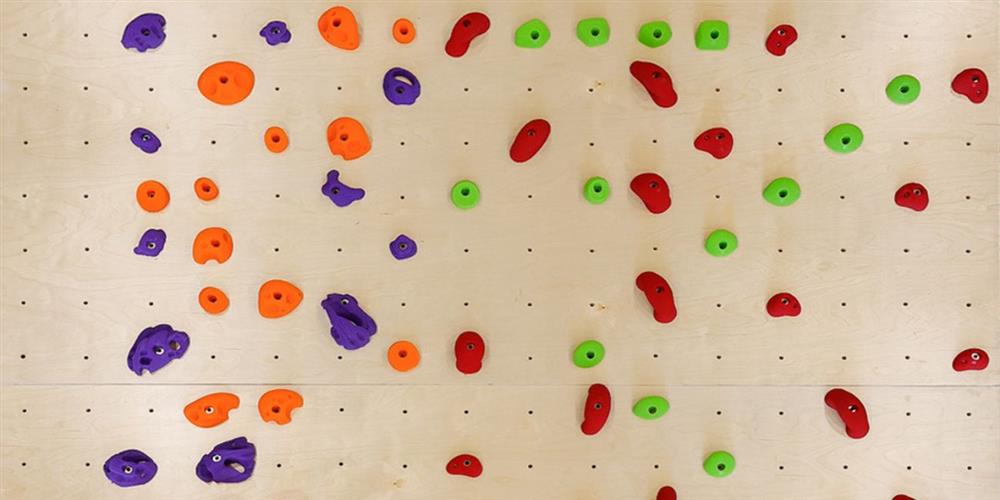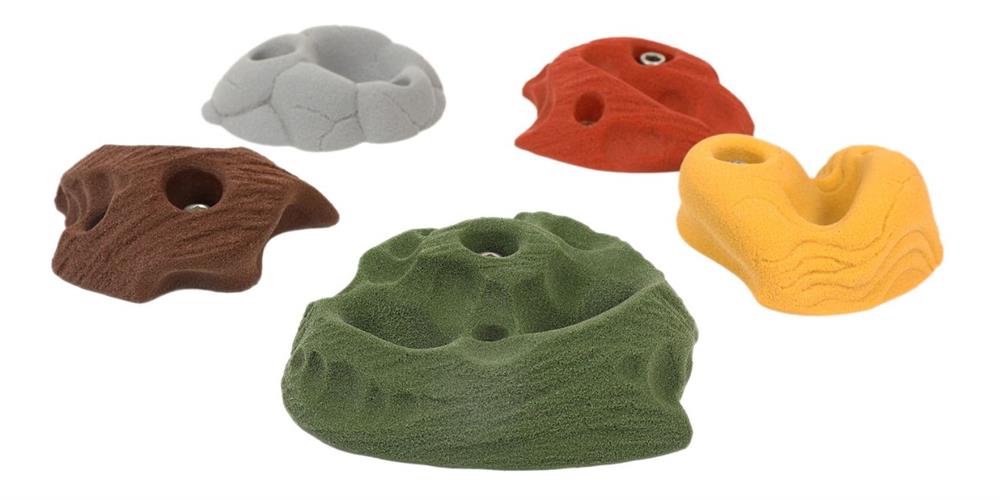Rock climbing is more than just a sport; it's an exhilarating blend of physical prowess, mental stamina, and technique. Whether you’re a seasoned veteran scaling cliffs or a fitness buff trying out indoor climbing, you need to know your grips.
This guide explores the essential rock climbing grips you need to know and provides detailed insights, practical techniques, and valuable tips to help you master these critical grips.
An Introduction to Essential Rock Climbing Grips
There are countless holds and grips in climbing, each serving a unique purpose. However, some grips are fundamental, forming the basis of more complex maneuvers. These essential grips include the crimp, sloper pinch, and pocket.
Proper grip techniques can save energy, prevent injuries, and improve your overall climbing performance. By familiarizing yourself with these key grips, you’ll be better prepared to tackle a wide variety of climbing challenges.

The Grips Every Rock Climber Must Know
Here are the different grips you should be familiar with.
1. The Full Crimp
The full crimp is a powerful yet potentially demanding grip every climber should master. It involves placing the fingers on a small edge, with the fingertips perpendicular to the hold and the thumb wrapped over the top of the index finger. This creates a secure but intense grip.
This grip maximizes finger strength, allowing climbers to hold onto very small and thin edges that would be impossible to grasp with other types of grips. However, due to the high stress on the tendons and finger joints, it’s crucial to use the full crimp sparingly and wisely to avoid injuries.
2. The Half Crimp
The half crimp is a versatile and less strenuous variation of the full crimp, making it an important grip for climbers to master. To execute a half crimp, place your fingers on a small ledge with the first joint of your fingers bent at approximately a 90-degree angle while keeping your knuckles flat. Unlike the full crimp, the thumb doesn’t wrap over the top of the index finger.
This position allows for a strong and secure hold on small edges but with reduced stress on the tendons and finger joints, lowering the risk of injuries. The half crimp offers a balanced blend of strength and endurance, making it a go-to grip for many climbers, especially during prolonged climbs or when transitioning between different types of holds.
3. The Sloper Grip
The sloper grip is a less intuitive but extremely crucial technique that every climber should master. Unlike crimp grips, which depend heavily on finger strength, slopers require you to utilize an open-handed grip on rounded holds with little to no defined edges.
Climbers must maximize the surface area of contact between their hand and the hold to execute a sloper grip effectively, spreading the finger wide and pressing the palm against the hold. While it might feel unstable at first, mastering the sloper grip can significantly expand the range of routes you can tackle, especially on climbs featuring smooth, rounded surfaces where other grips simply won't suffice.
4. The Pinch Grip
The pinch grip involves using your thumb to press against your fingers, creating a squeezing motion on holds that resemble the form of a pinch. Pinches can range from narrow to wide and can help on both artificial climbing walls and natural rock formations. The pinch grip is highly valuable because it engages not only the fingers but also the muscles in the forearm, providing a more holistic engagement.
Mastering this grip can significantly increase your ability to tackle a diverse array of climbing routes, especially those featuring protruding and fin-like holds. By incorporating the pinch into your climbing repertoire, you'll improve both your grip strength and hand dexterity, making it an essential technique for any climber aiming for versatility and control.
5. The Pocket Grip
The pocket grip is all about precision and finger strength. It’s essential for handling climbing hold pockets that only allow for one or two fingers. To execute this grip, place your fingers into small, rounded pockets on the climbing surface, using just enough finger surface to secure a reliable hold.
This grip is particularly common in limestone and sandstone climbing areas where natural erosion creates these unique features. Mastering the pocket grip is crucial because it engages and strengthens the individual fingers, offering an unmatched advantage when navigating routes with minimalistic holds.
6. The Open-Hand Grip
The open-hand grip is a fundamental technique that every climber should be familiar with due to its emphasis on reducing finger strain while maximizing contact area. Unlike more strenuous grips like the crimp, the open-hand grip involves laying the fingers flat against the hold without curling them into a tight position. This distributes the force more evenly across the hand, minimizing the risk of finger injuries and allowing for sustained climbs.
Mastering the open-hand grip is particularly useful on larger, rounded holds where finger strength alone won't suffice. It promotes a strategic approach to climbing, relying on balance and full-hand engagement, which can be a game-changer for endurance during long routes or difficult maneuvers. This grip isn’t just about strength—it's about technique and knowing how to leverage your entire hand to stay secure on the climb.
7. The Friction Grip
The last rock climbing grip you need to know is the friction grip. The friction grip relies on the climber's ability to generate and maintain friction between their hands and the rock surface. Unlike other grips that depend on defined holds, the friction grip is for smooth, featureless surfaces where there are no obvious handholds.
This grip requires the climber to press their palms, fingers, or even entire body against the rock to create enough friction to stay secure. Mastering the friction grip is crucial because it allows climbers to tackle routes with slab climbs or polished rock faces where traditional holds are scarce.

Tips for Improving Grip Strength and Endurance
Along with mastering grip techniques, it’s also crucial for climbers to improve their grip strength and endurance. To enhance your grip strength and stamina, consider these training exercises.
Fingerboard Training
Hangboards or fingerboards are excellent tools for building finger strength and endurance. These boards have different-sized holds, allowing climbers to train specific grips, including crimps, slopers, and pockets.
Bouldering
Bouldering is a form of climbing that involves shorter and more intense routes without the use of ropes. This type of climbing is ideal for working on grip strength, as it requires you to navigate a wide variety of holds while maintaining your balance and stability.
Squeeze Tools
Squeeze tools, such as stress balls or grip strengtheners, are great for improving forearm and hand strength. These tools are ideal for short bursts of intense training during rest periods between climbs.
Elevate Your Climbing With Atomik Climbing Holds
We hope our guide helps you master the critical holds and techniques that every experienced rock climber should have in their repertoire. If you need to add more advanced holds to your rock climbing wall, Atomik Climbing Holds has you covered!
Our wide inventory includes every type of climbing hold a climber needs to hone their technique and improve their skill. Browse our selection, or contact our staff if you have any climbing hold questions today!




Leave your comment